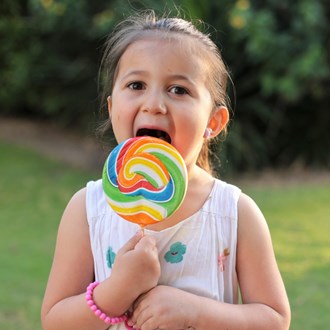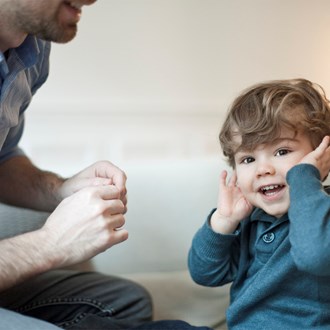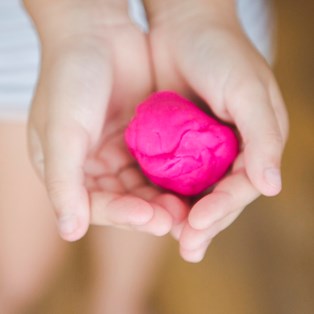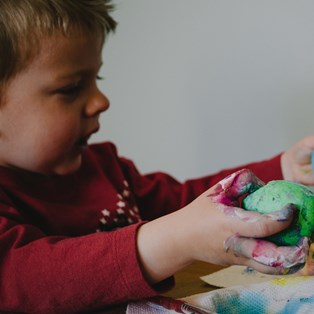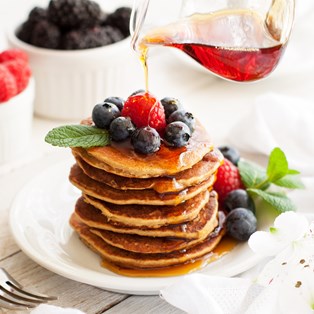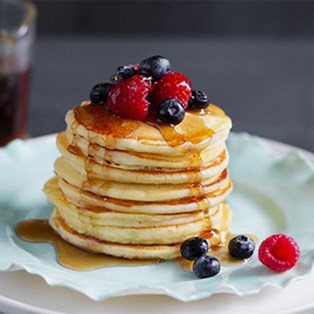10 screen-free boredom busters for toddlers and preschoolers

Experts tips for learning through play
By Practical Parenting team
January 09 2019
Get a couple of bored kids on your hands? Here are some simple, low-cost ways to keep them happy and entertained without having to resort to devices.
1 Build an indoor rock pool
Fill a basin with a few centimeters of water, then add rocks, shells, plastic fish, starfish and seaweed. Let your kids explore the ‘rock pool’ and talk about the beach and the kind of animals and plants that live in the water. “Natural items are wonderful to explore and provide multi-sensory feedback,” says Occupational Therapist Nicole Grant from Gateway Therapies. “Talk to your children about the feel and smell of the items in your basin. Ask them ‘what do they remind you of?’”
2 Water balloon target practice
Simple to set up, heaps of fun to do! Use a piece of chalk to draw a series of circles inside one another going from large to small (like on a dart board). Inside each circle, write numbers from 5 to 35, going up in increments of five with the largest number in the centre. Next, get your child to stand a few feet away from the largest circle and throw water balloons at it, aiming to get as close as possible to the centre for maximum points.
3 Go on a treasure hunt
This is a lovely outdoor activity that makes a regular stroll much more interesting. Take a sheet of paper and draw some simple objects you’d find in nature on it, such as a flower, rock, leaf, stick or insect, then draw a box next to each one. Go for a walk and as your little one finds each treasure, get them to tick the appropriate box. “This task is a great learning activity for pre-readers,” Nicole says. “It helps increase attention and concentration, and searching for objects also helps with visual processing skills.”

getty images
4 Make an indoor water tray
For minimally messy water play, spread large towels on the patio, balcony or kitchen floor then place a large plastic basin on top and half-fill with water. Add bath toys, measuring cups and spoons and let them splash about. “Water play is great for learning about science concepts such as floating and sinking, and maths concepts, such as measuring and volume,” Nicole says.
5 Have a balloon bath
Fill your bath with water as normal then add 15-20 small water balloons which have been half-filled with water. Your kids will have fun squishing them and slipping them from hand to hand. “This is a wonderful sensory activity,” Nicole says.
6 Have a wash day
Water and bubbles are a toddlers idea of heaven. Let them ‘wash’ some baby dolls or plastic toys in the bathroom sink. If they are curious when they see you washing, let them help. “Children learn through imitation. Tasks like this help them to learn how to sequence activities and the steps involved in daily activities,” Nicole says.
7 Sort it out!
Give your child a container of loose buttons and an empty ice tray and get them to sort the items into groups, either by colour or size. For older children, try small pom-poms and give them a tweezers to pick up and sort them. This is great for fine motor skills and learning patience.
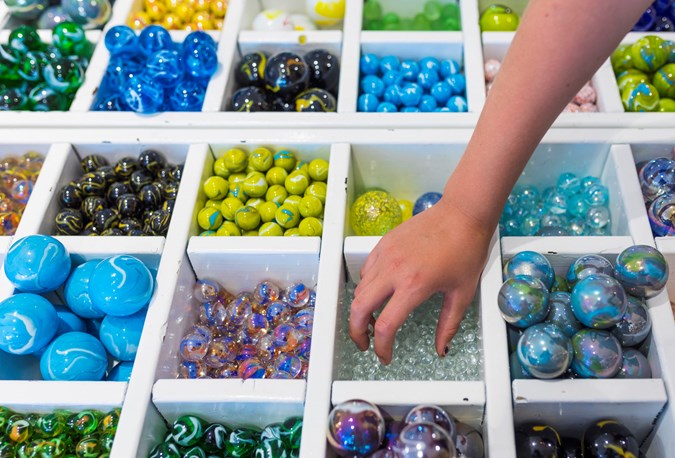
getty images
8 Make some moon sand
Can’t get to the beach to make sandcastles? Simply mix eight cups of plain flour with one cup of oil to make a soft ‘sand’ for kids to dig and make castles with. Use a large plastic tray as your ‘beach’ and small plastic or paper cups for making sandcastles. “Children love the feel of different textures and are often fascinated by the properties of these substances,” Nicole says.
9 Make a rice tray
Use food colouring to colour uncooked rice for some sensory play. Just add a few drops to about four cups of dry rice and stir. Allow to dry then pour into a bowl or large aluminium lasagne tray. Give your kids some small cups and a sieve and let them fill, sift and pour to their hearts content. “This activity is calming and relaxing. It’s a good one to do before rest time,” Nicole says.
10 Make bubble prints
Cut shapes from bubble wrap to paint and stamp paper with. Try hearts, circles, squares, triangles, rectangles and letters. Paint the bubble wrap on the bumpy side and use to make prints on paper. “Children are fascinated by bubble wrap,” Nicole says. “This is a great sensory activity with the added bonus of learning about shapes.”
Need more ideas? Try making playdough or damper on stick.



